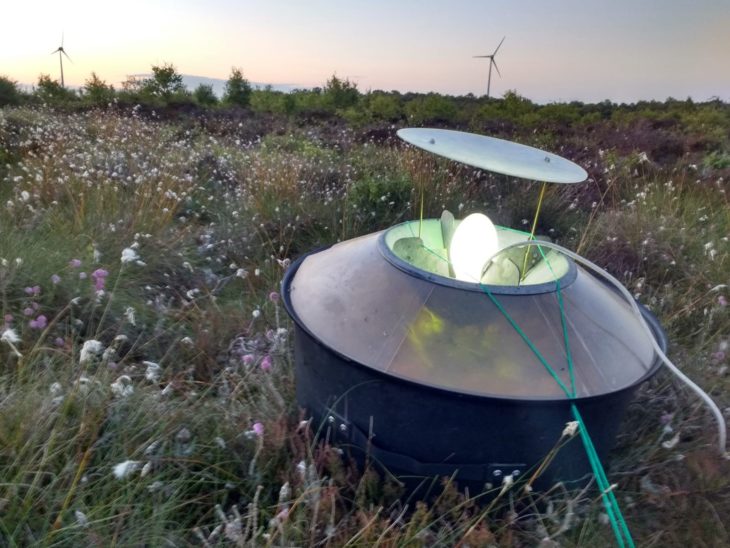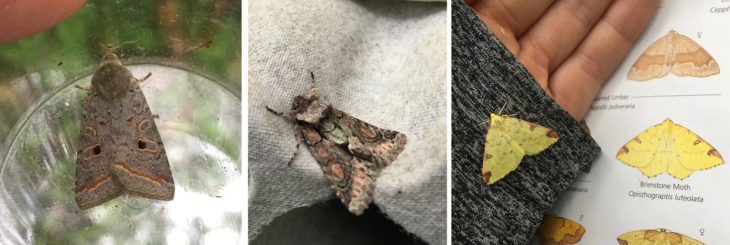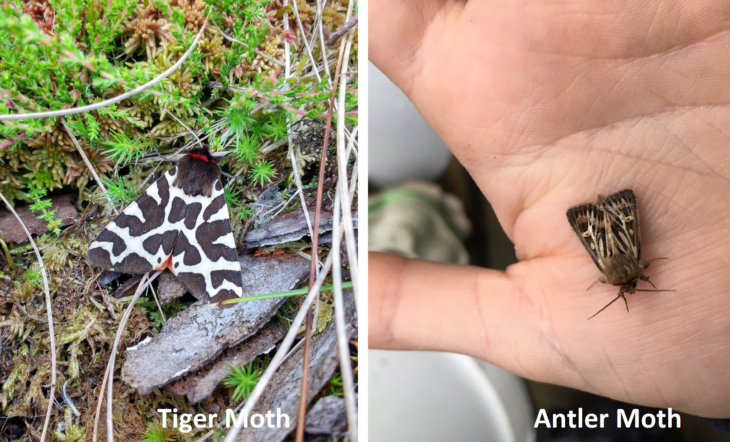Why do we Monitor Moths?
“Moth Trapping” is one of our favourite types of wildlife monitoring at Falls of Clyde and despite the 6am alarm clock and rainy mornings, we carry out this survey every two weeks.
In a similar way to butterflies moths are an integral part of many ecosystems. In their adult form they provide food for a wide range of creatures, from amphibians to bats, and their larval form (caterpillar) is a key food source for young birds. They also provide the added benefit of pollinating our plants so monitoring their numbers and species distributions can help with future research.
Moths are also considered a “flagship” species for invertebrates, wherby their conservation will also help to protect many other insects. It’s therefore important for us to keep an eye on how well they’re doing through regular surveys.
The preferred method for monitoring moths is with a light trap, where the moths are attracted to a light source and fly into a funnelled container full of egg boxes for them to hide amongst. In the morning we then remove the moths one by one to identify them, before releasing them back into their habitat.

This year at Falls of Clyde we have counted a total of 78 species including the Red Line Quaker (Agrochola lota), Green Brindled Crescent (Allophyes oxyacanthae), and the Brimstone Moth (Opisthograptis luteolata).

Some of our favourites species are…
The Poplar Hawk Moth (Laothoe populi): The most common hawk moth in the UK, and pretty unmistakeable at 30-46mm long, so if you want impress someone with your moth ID skills this is the one to go for ! It’s our Intern Cait’s favourite as they can be quite lazy in the morning when we’re releasing them and often need some encouragement!
Another unmistakeable and rather exotic looking moth is the Tiger Moth (Arctia caja), this one isn’t something you would expect to see in the UK… but you can even find them in The Shetland Isles! They have brown and white blotches on their cover wings and bright orange to yellow on their abdomen. When scared this moth will show you its hindwings and produce a yellow fluid from two ducts behind its ears. Although we haven’t seen this moth on site this year, it is our Head Ranger Laura’s favourite.
My favourite this season has been the Antler Moth (Cerapteryx graminis), named for the white antler like mark on its forewing. Although common this is a beautiful species to come across, and definitely one that will spark an interest in mothing! The Antler Moth’s preferred habitat is grassland, and interestingly, the caterpillars prefer to eat at nighttime!

Jenny Mann, Falls of Clyde Assistant Ranger
Help support our vital work and join us today!
Help protect Scotland’s wildlife
Our work to save Scotland’s wildlife is made possible thanks to the generosity of our members and supporters.
Join today from just £3 a month to help protect the species you love.
Preface
“Moth Trapping” is one of our favourite types of wildlife monitoring at Falls of Clyde and despite the 6am alarm clock and rainy mornings, we carry out this survey every …
